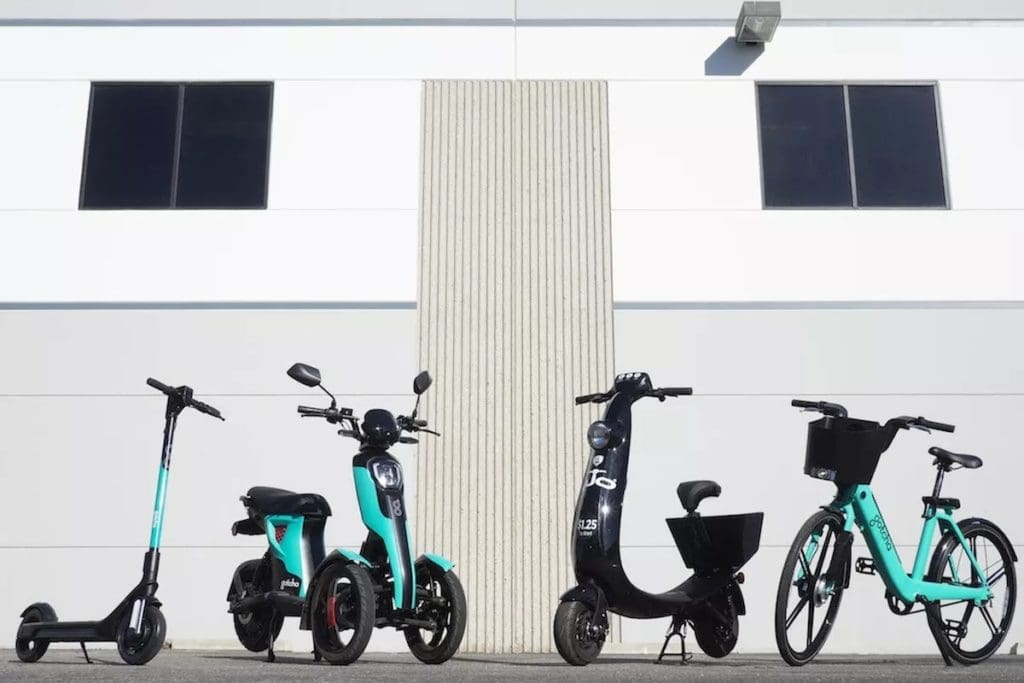What is Micromobility?

Learn more about this rapidly growing industry & why every Australian needs to know about it.
The term ‘micromobility’ is barely four years old, first officially used by USA business analyst Horace Dediu in 2017. Being so new, its definition is still evolving, but it’s broadly agreed at a minimum to include bicycles, e-bikes, electric scooters, and shared systems relating to all of these devices. I’ll add more categories later in this article.
Electric cars are not our saviour
Many media commentators and members of the general public believe that electric cars will be our saviour in relation to climate change, air and noise pollution in our cities and the various other ills that current internal combustion engine (ICE) based vehicles impose upon us. But electric cars still take up the same excessive space in our ever more crowded cities.
There are major issues around the mining of elements for their batteries, burning of fossil fuels (certainly in Australia) to generate the electricity they require and the huge amounts of materials needed to manufacture a vehicle weighing well over a tonne, compared to a 20 kg e-bike that requires 98% less material.
Micromobility’s future in Australia can be described in one word… growth, because all of its stars appear to be aligning.
The good news: Australia is embracing Micromobility at a rapidly increasing pace
Things are moving fast in the Australian micromobility space.
Industry data shows that e-bike sales have been growing at 50% per year for the past three consecutive financial years. That means sales are currently doubling in less than every two years.
Electric bikeshare and scooter share schemes are being rolled out across Australian cities. Whilst these have not been without teething problems and media controversies, the data is showing that electrified share schemes are seeing higher ridership rates per bike or scooter per day than the earlier non-electric schemes that they’re rapidly replacing.
Recently, we test rode the new Lime dockless ebike share scheme in Sydney’s deceptively hilly CBD. It was immediately obvious that this system could take you up the hills in comfort, even if you were wearing business clothing, unlike Sydney’s previous non-electrified OFO and Mobike schemes.
New micromobility related businesses are springing up and new investment is coming in at an unprecedented rate. One recent example was Australia’s government owned Clean Energy Finance Corporation becoming the lead investor in a $16 million fundraising round for Zoomo, a delivery e-bike start-up.
Although there is no aggregated sales date available for electric scooters, all anecdotal evidence points to booming sales.
At present, many micromobility solutions are strictly speaking, not legal. In Australia, most transport related legislation is state based, so legality currently varies between states. Like any new technology, legislation will take time to catch up with reality. For example in some countries during the earliest days of cars (late 1800’s), a person was required to walk in front with a red flag.
What’s Next for Micromobility?
Micromobility’s future in Australia can be described in one word… growth, because all of its stars appear to be aligning. Here are just some of the drivers.
Australians are becoming more concerned about climate change. Despite the lack of conviction or action at a federal level, our state and territory governments are spending more money on micromobility friendly infrastructure and taking other positive steps.
Our population is aging and e-bikes in particular are perfect for older people wanting to stay active and mobile.
Meanwhile younger people’s culture has changed. Many are less enamoured by car culture than their parents were back in the late 20th century. They’re more open to the shared economy, more concerned about their environmental footprint and used to adopting new technology and systems.
Our population is growing, becoming more urbanised and within every Australian city there is a strong trend towards increasing density, particularly in the city centres and inner suburbs. All of this favours smaller, lighter, more space effective transportation systems – micromobility – over traditional cars.
Light electric vehicle technology is rapidly improving. Batteries are becoming more energy dense. With increased volume of sales comes economies of scale and ultimately lower prices.
Despite all of these promising developments, Australia still has a long way to go. Walk outside to any busy road and you’ll see that ICE vehicles still dominate. And they’re getting bigger with SUV’s and dual cab utes overtaking traditional sized cars in the automotive arms race. This can look quite depressing and overwhelming to micromobility advocates.
However change always begins at the margins. There is always a bell curve. City centres and gentrified inner suburbs will lead the way, with our vast suburban plains gradually following.
Because micromobility addresses so many of the key issues outlined above, despite whatever legal or government lids that are imposed, it will inevitably find a way to the top, just like a bubble rising through water.
Help us share the latest micromobility news with others…
Join us on social media
About the Micromobility Report
Every new activity needs a forum through which its new products and the latest trends can be shared and discussed. The Micromobility Report aims to be that forum, under the tag line, ‘Go Further With Less’.
Its content is arranged under four main menus:
- Products will cover every relevant form of bike, scooter and other LEV (light electric vehicle).
- Infrastructure will cover a wide range of topics including bike and scooter share systems, end of trip facilities, integration & data, planning, design & education, policy & funding, mobility as a service (MAAS) and more.
- Recreation will include all forms of micromobility tourism and recreation including rail trails and MTB parks.
- Features will include the latest companies and products, Annual Guides focused on key micromobility topics and opinion articles.
Want to stay in the loop with industry news and updates? The Micromobility Report has a free monthly newsletter to keep you informed. Subscribe Now!

